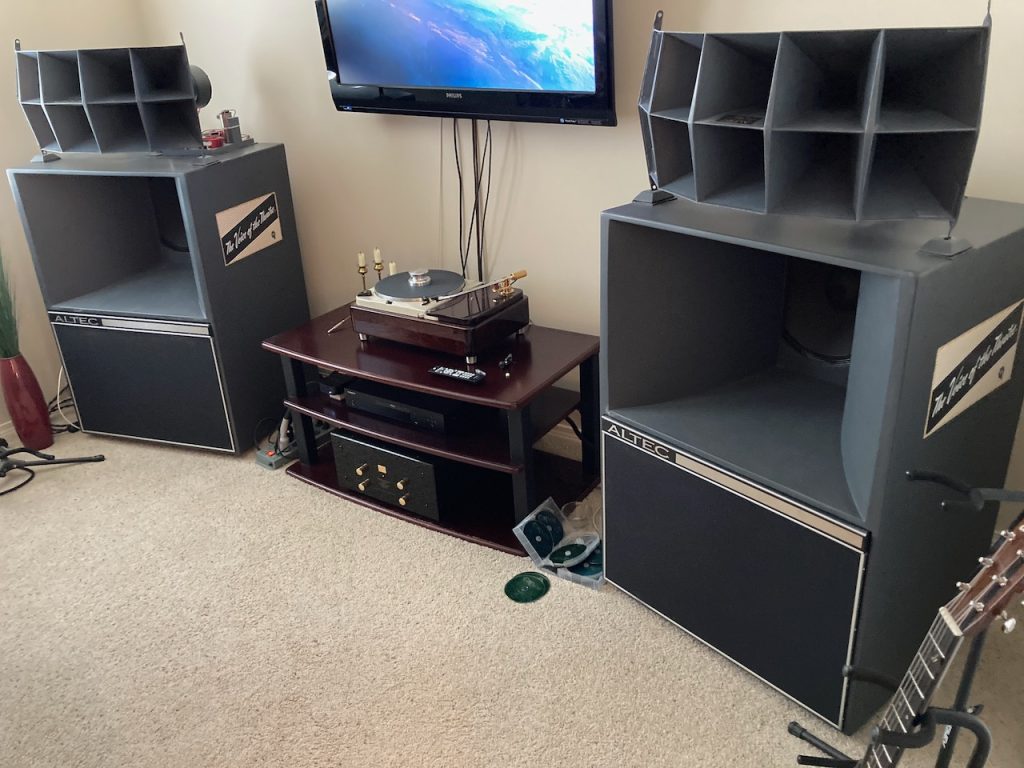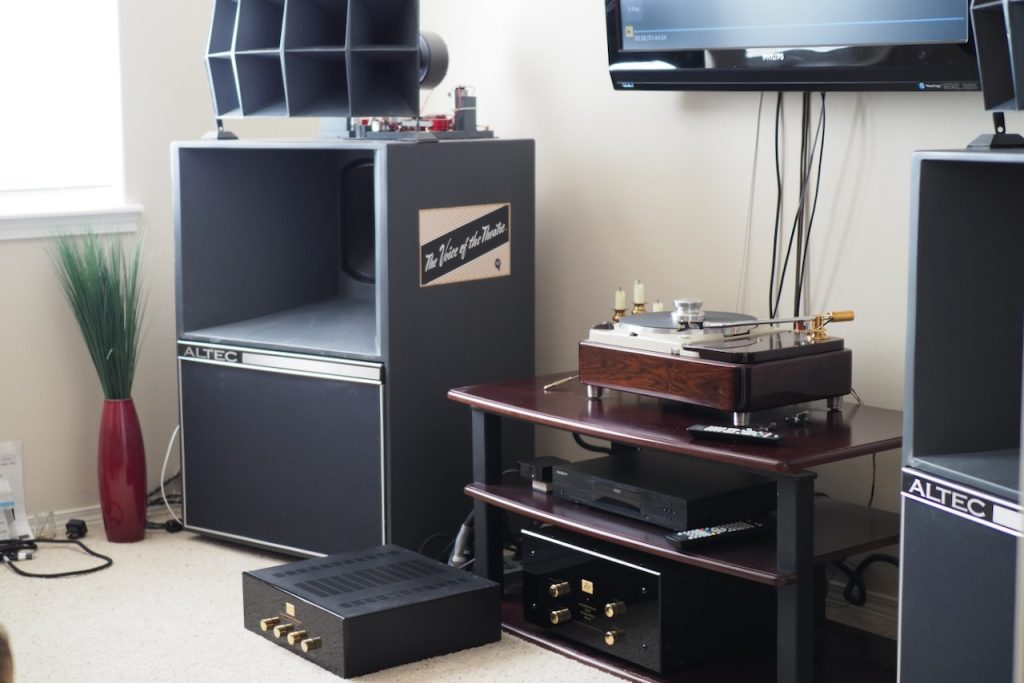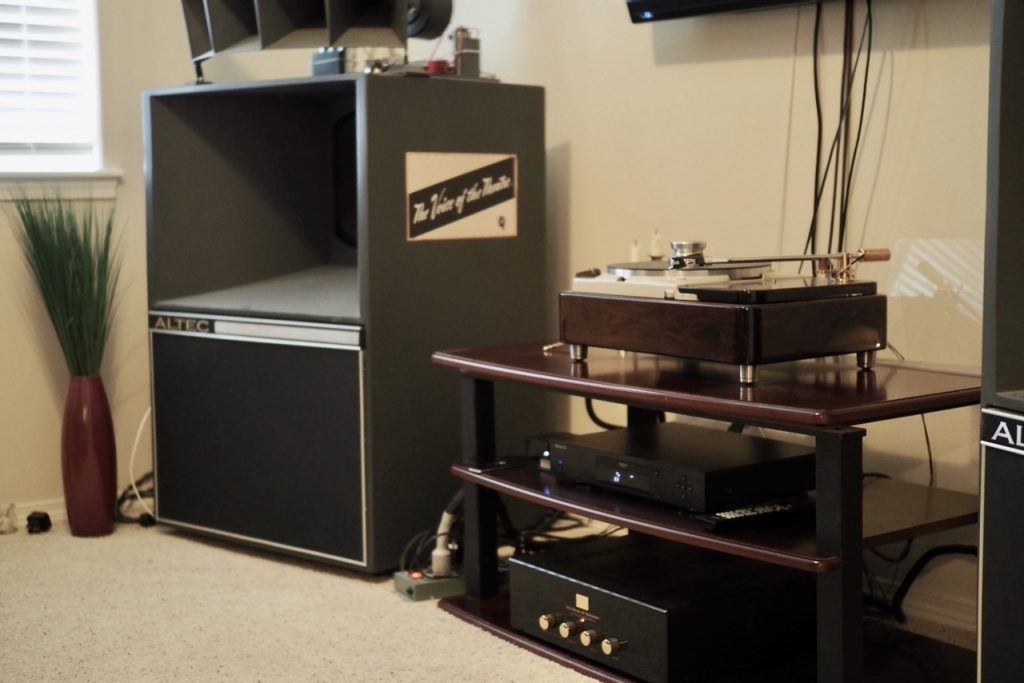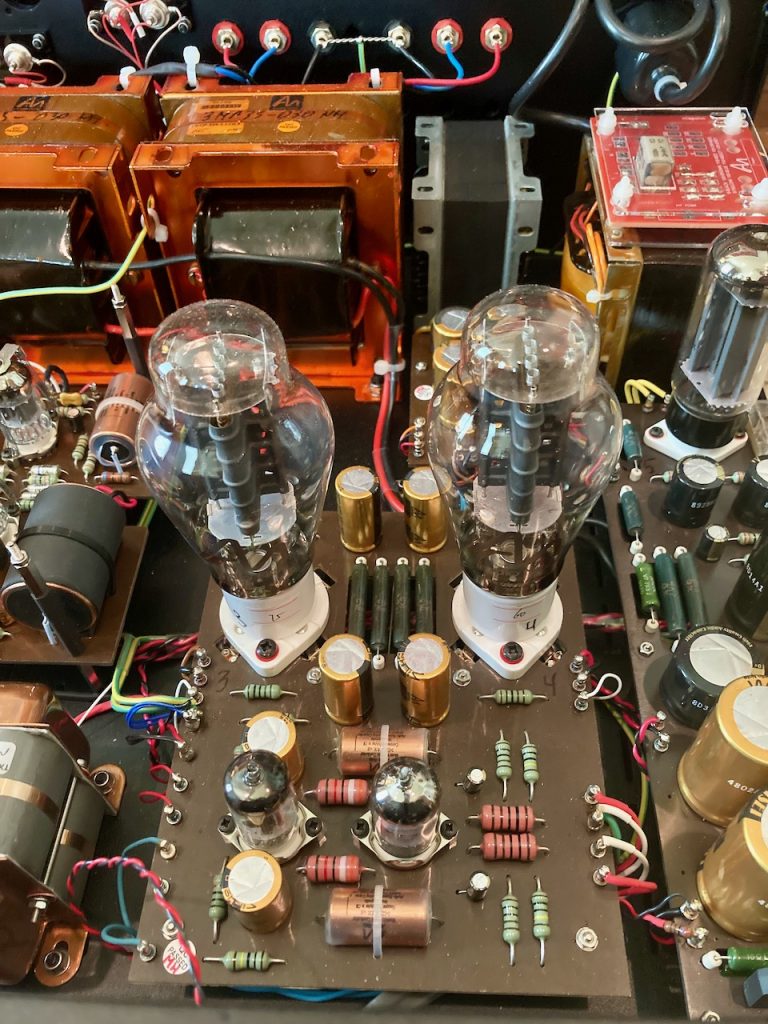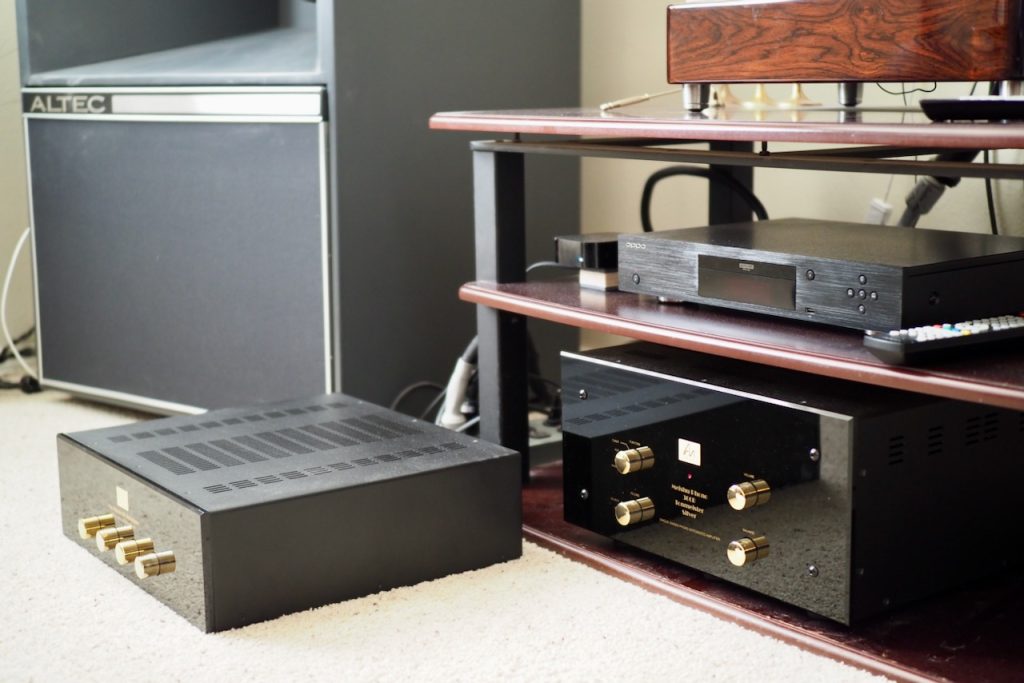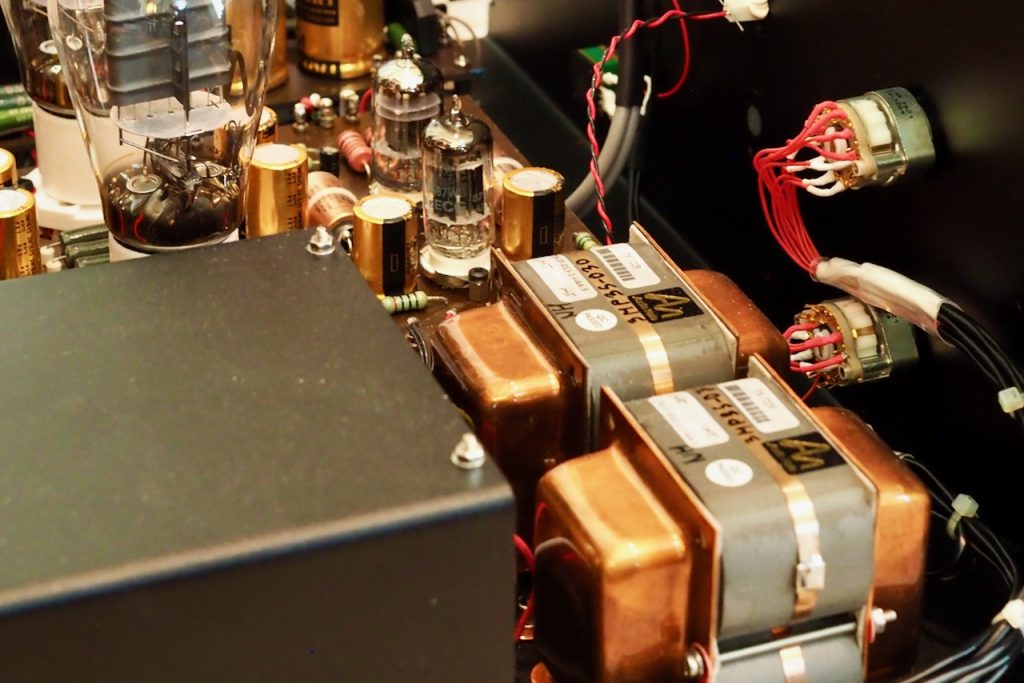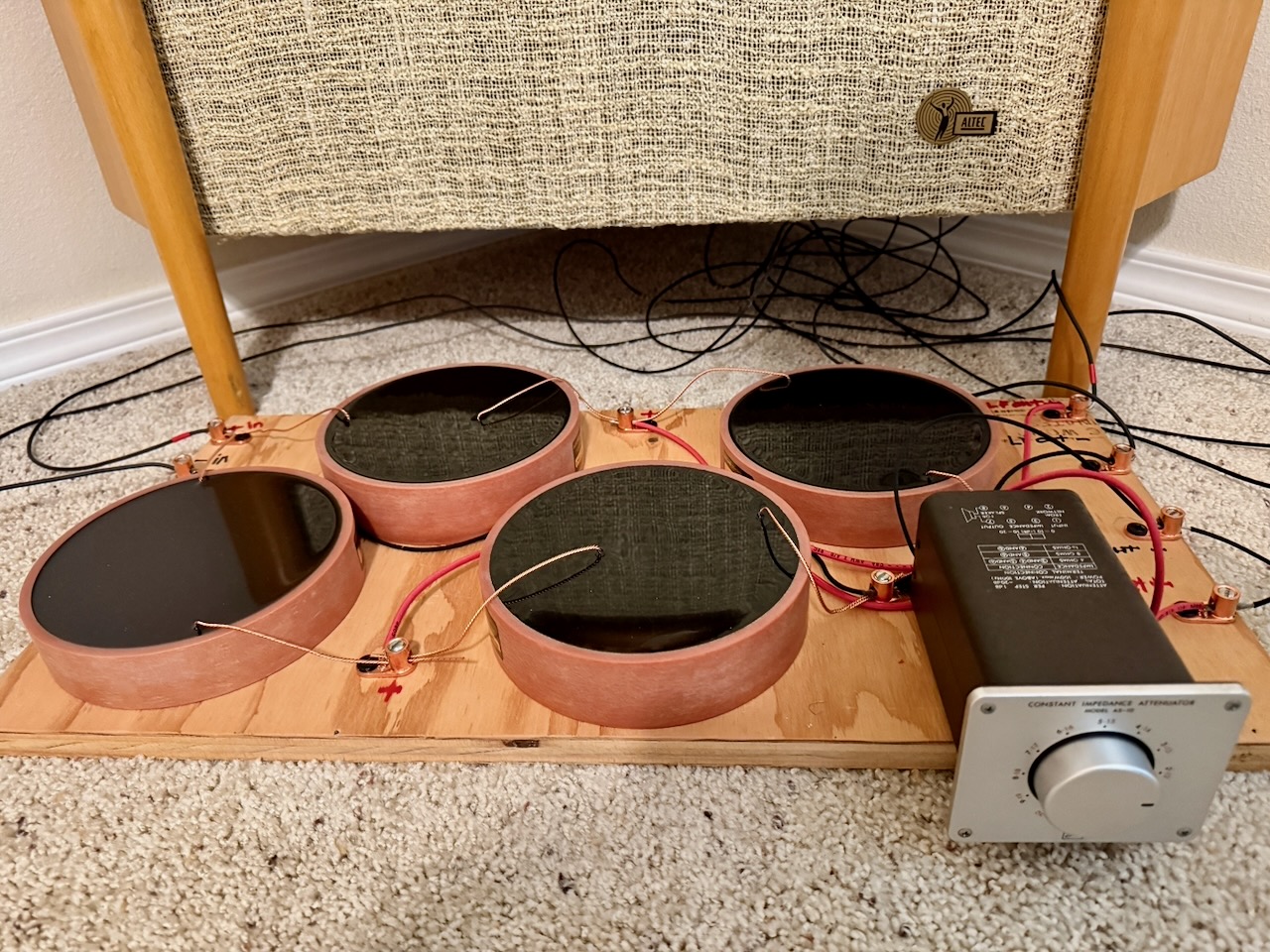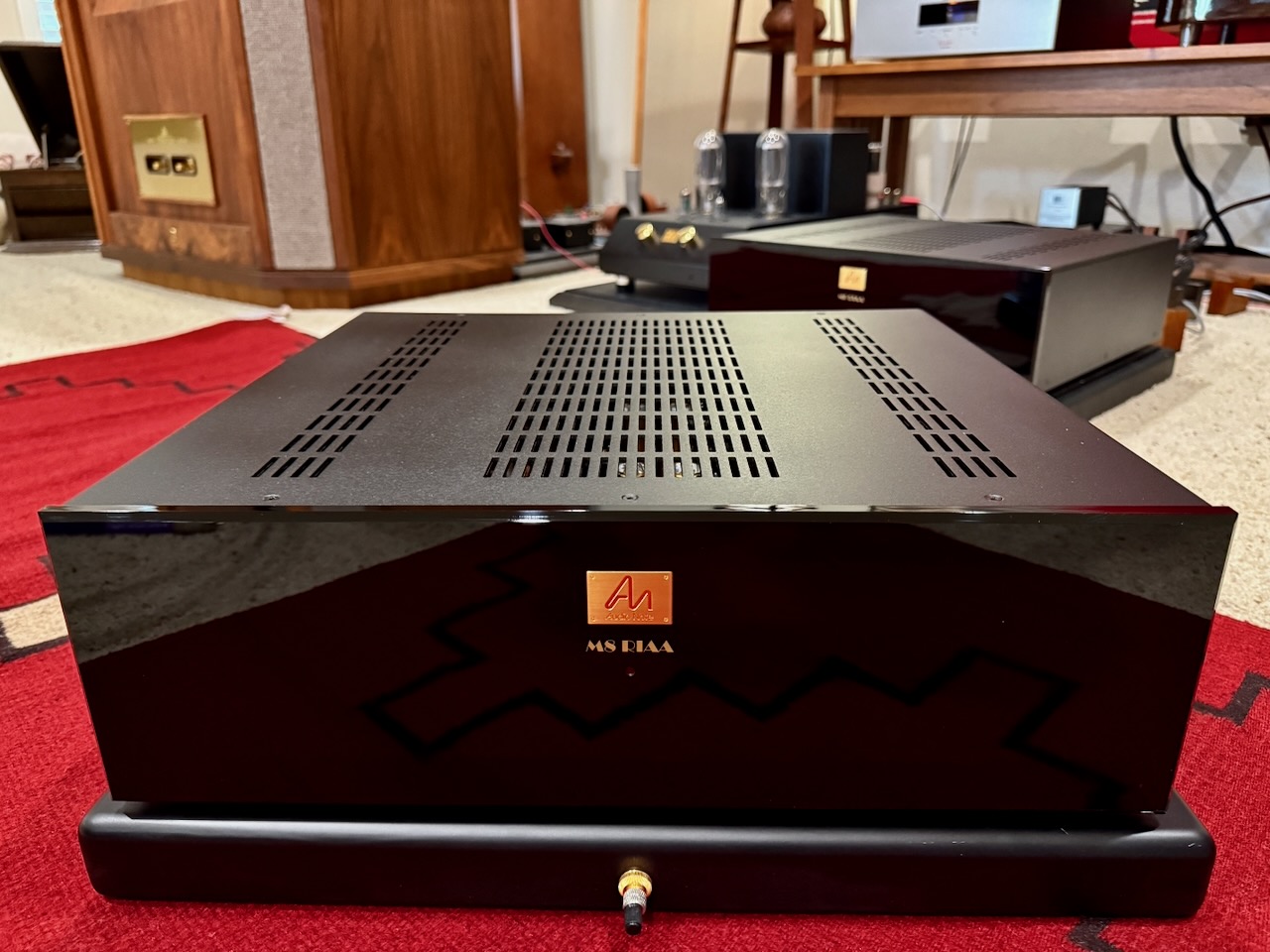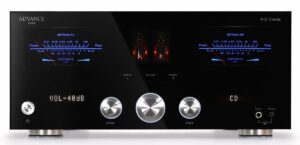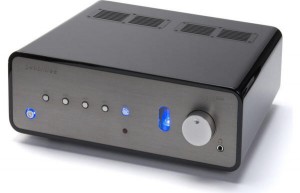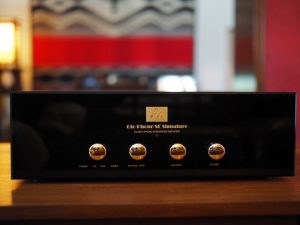Listening Impressions
Let me start off by telling you about my listening impressions with the Meishu in my vintage Altec A5 Voice of the Theatre loudspeakers based audio-visual system, then we'll move on to my listening impressions with my Westminster Royal SE loudspeakers based music system.
Typically, after an initial listen in my Tannoy Westminster Royal SE loudspeakers based music system, I install new components into my Altec A5 Voice of the Theatre loudspeakers based audio-visual system to accumulate run-in time, until their recommended run-in time is topped off.
Run-in is an important step in the review process, as there can be a rather remarkable transformation in a component's overall performance from its 'new out of the box' performance, to its fully run-in performance.
From the Meishu's Owner's Manual: "The new amplifier requires about 200 hours of initial use (called "bedding in") before the circuitry becomes stable and optimum performance is realized. As the amplifier "beds in" the sound will become increasingly smoother, detailed and open."
That was indeed the case with the Meishu, and as the 200 hour "bedding in" period was reached, there was a very noticeable increase in smoothness, detail, and openness, just as the Owner's Manual stated.
In this portion of the article, I'd like to give you an idea of the differences between Audio Note (UK) "Level Three" and "Level Two" performance, with the Meishu 300B integrated amplifier, and the Oto Phono SE Signature integrated amplifier, respectively.
After the Meishu Phono Silver Tonmeister was topped-off on run-in hours, I swapped back in the Oto SE Phono Signature, and did some back and forth listening comparisons to get a feel for the Level Three and Level Two performance differences.
If you are not familiar with Audio Note (UK) integrated amplifiers, first let me tell you that they have a 'signature' high-fidelity sound quality, with an engaging live-like musicality, that spans the successive Audio Note (UK) performance levels.
The Audio Note (UK) products have a rather an uncanny ability to deliver an exceptionally musical high-fidelity listening experience, from source material of almost any recording quality, which is not a trait you find in a lot of high-performance audio components.
Lower-fidelity recorded media are rendered as very listenable and musically enjoyable, to the delight of music lovers and music adventurers everywhere. Additionally, high-fidelity stereo media provides the high-performance visuospatial-style listening experience that many audiophiles desire.
One of my great treats to hear in audio is how magnificently Audio Note (UK) integrated amplifiers complement my vintage Altec loudspeakers collection, like my "Stokowski" Altec loudspeakers, or my Altec A5 Voice the Theatre loudspeakers, for example.
The huge room-filling sound-field of the vintage Altecs, combined with the Audio Note (UK) integrated amplifiers' high-fidelity sound quality and superb sense of musicality, produced an addictive listening experiences with these integrated amplifiers, so much so that they easily landed on my winner's podium of top "Wow!" listening experiences. Truly superb.
In my Altec A5 Voice the the Theatre loudspeakers audio-visual system, whether I was streaming video from my Apple TV, or watching movies on DVD or Blu-ray Disc, the results were mesmerizing listening-viewing experiences that were full of life and emotion, and brought out the best in musicality and sound quality of whatever source media I was using.
I think most of you know that I adore the performance of the Level Two Oto SE Phono Signature integrated amplifier (above), but I was bowled over by the magnitude of performance improvement brought by the Level Three Meishu.
There is a discernible Audio Note (UK) 'signature' sound quality between Level Two and Level Three for these integrated amplifiers, yet the overall sound quality and musical performance capability takes a rather large step up when going from the Level Two Oto SE Phono Signature integrated amplifier to the Level Three Meishu. The performance improvement is not subtle.
Just as an aside, the Oto SE Signature has 10-watts of parallel single-ended-pentode EL84 output power (above), and the Meishu has 8 watts of 300B single-ended-triode output power (below), but the Meishu sounded subjectively more powerful to me, particularly when it came to big bass transients in movie scores, which had the desirable ability to make me jump in my viewing seat.
The Meishu has a more articulate and resolved soft-to-loud dynamic response, and an extended high-frequency presentation that is both sweeter and smoother, than the Oto SE Signature.
The Meishu also has a more natural 'real-sound' quality to its tonal balance, as well as a richer presentation of harmonics, than the Oto SE Signature.
I imagine the additional "realness," greater naturalness, and richer harmonics is what the Meishu's direct-heated, single-ended-triode, valve rectification, interstage transformer-coupling, and overall more exotic transformers, brings to the performance.
One of the things that I've always loved about single-ended-pentode EL84 amplifiers, like the Oto SE Signature, is their high resolution and transparency. Single-ended EL84 amplifiers let a lot of musical information come through, and probably more than most listeners are used to hearing from vacuum tube amplifiers.
However, the Meishu actually provided more resolution of low-level detail, greater transparency, more bass articulation, and a more expansive—and room filling—sense of 'ambient acoustic space' from recordings, than did the Oto SE Signature.
Based on Darko's and Andy's earlier comments, I suspect the increased resolution and greater transparency are among the benefits of Andy's new transformer designs, as well as the other component upgrades, in the Meishu Tonmeister.
While I consider the Oto SE Signature to be a wonderful integrated amplifier, one that would make a great life-time choice for any music lover, my listening sessions made it obvious that the Meishu Tonmeister ups the level of performance, both musically and sonically, by a significant amount.
If your budget allows for it, the Meishu Tonmeister truly delivers 'next level' performance.
I have one final comment about the Meishu's line-level performance in my audio-visual system, that was perhaps its most noticeable difference from that of the Oto SE Signature—or any other amplifier I've had in my audio-visual system—was the remarkable expansion and openness of the sound-field the Meishu delivers.
Typically, amplifiers in my audio-visual system produce a sound-field that extends from just in front of the plane of my A5 loudspeakers, back into the soundstage past the front wall, and extending to the side walls.
Depth into the soundstage varies somewhat with different amplifiers, but all of them position the start of the sound-field more or less just in front of the plane of my Altec A5 loudspeakers.
However, with the Meishu, the ambient sound-field completely engulfed my audio-visual room, and if the source media was rich in stereo visuospatial information, it also projected aural images well in front of the plane of the loudspeakers towards my listening position.
I've never encountered that sort of sound-field expansion in my audio-visual system before. The overall effect was that as a listener-viewer, I was placed into the sound-field, with aural images appearing all about me, which made me feel more like I was a participant in the events unfolding in the movie, rather than just an outside observer.
You can get something like that effect in a movie theater where loudspeakers are positioned to the front, sides, and back of the listener-viewer, but in a two-channel audio-visual system with loudspeakers positioned at room boundary positions, like mine, it was an unprecedented performance improvement, and very thrilling to experience.
The additional level of live-likeness and emotional connection that kind of sound-field expansion and immersion lends to video soundtracks, cannot be overstated. I was very impressed.
When going from Level Two Oto SE Signature to the Level Three Meishu, essentially every aspect of performance is improved and refined in meaningful ways.
Audio Note (UK) calls the Meishu the "Tonmeister" for a reason, as it is truly The Master of Tone, with an absolutely breathtakingly natural and beautiful tonal balance, that will be a delight for listeners to experience.
The Meishu's high-frequencies were extended, yet maintained a natural 'sweetness' like I hear in life.
The Meishu's mid-range was astonishingly transparent, with beautifully resolved tone color, and provided a vivid holographic presentation of soundtrack aural images.
The Meishu's low-frequencies were extended, well-resolved, articulate, well-balanced, dynamic, and were capable of making me jump when the source media called for it.
Also, those foley sound effects of everyday sounds in movies and television shows, sound remarkably real through the Meishu. It was more than once that I had to check to see if it was my phone ringing, or there was a knock on the door, etc., or if it was a foley sound effect I was hearing.
The Meishu's dynamic articulation was excellent across the softest to the loudest levels.
I heard an expansive soundstage with the Meishu, with a distinctive layering of aural images from well in front of the plane of the loudspeakers, to deep within the soundstage past the front wall, and extending to the side walls and beyond.
Ok, so that's the sort of performance I experienced from line-level audio-video sources with the Meishu Tonmeister Silver and Oto SE Signature in my audio-visual system.
The Meishu provided the highest level of performance in my vintage Altec A5 Voice of the Theatre loudspeakers based audio-visual system that I've heard to date from any amplifier, and basically left me in a continual "Wow!" state as a listener-viewer.




